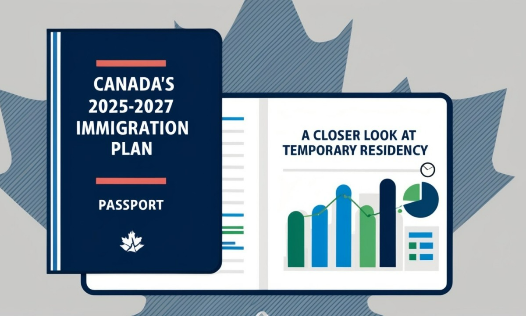Payment is being processed. Please do not refresh or close this page until your payment is complete.
 Book an Appointment
Book an Appointment

Canada’s recent immigration changes have drawn fresh attention to who is granted a path to permanent residency and who is left out. In March, the federal government introduced a national program allowing up to 6,000 out-of-status construction workers to apply for permanent residence. The scheme expands on an earlier pilot that had offered status to 1,365 people and their families in the Greater Toronto Area, which ended in December 2024.
“Although framed as a recognition of essential labour, the new program highlights a deeper reality: Canada’s immigration reforms continue to prioritise business and industry needs,” wrote Shiva S. Mohan, research fellow at the Canada Excellence Research Chair in Migration & Integration, Toronto Metropolitan University, in The Conversation.
Mohan added, “This framework assigns greater value to certain types of labour, while sidelining others. This sidelining is often based on race, gender and class.”
Construction gets priority amid housing push
With a Canada federal election on the horizon and a growing housing crisis, the construction sector has become a clear priority.
Groups like the Canadian Home Builders’ Association have pushed for more skilled trades workers and faster housing construction. That lobbying effort appears to have paid off.
The inclusion of 19 new occupations in the trades category—including roofers, concrete finishers, heavy-duty equipment mechanics, and cooks—reflects that focus.
But the narrow scope of the new pathway leaves out thousands working in sectors like caregiving, domestic work and agriculture, many of whom are racialised and have no direct route to permanent status.
Former Immigration Minister Marc Miller estimated in 2024 that Canada is home to between 300,000 and 600,000 out-of-status people. The new pathway would cover just 1 to 2 per cent of them.
Mohan, who also works with the international research project MIrreM, said Canada’s regularisation efforts are “fragmented and insufficient”.
“Programs remain narrowly targeted, restricted and quickly capped, with application limits often reached on the same day they open,” Mohan wrote.
By contrast, Spain’s 2005 reforms granted status to 700,000 people based on work history, long-term residence and community ties—a model some researchers say Canada could study more seriously.
Immigration targets cut ahead of election
As part of a broader tightening, the government has cut immigration targets for the next three years.
In December, Miller told the Commons immigration committee that as nearly five million temporary permits are set to expire by the end of 2025, “we anticipate that most holders will leave the country voluntarily”.
According to Canada’s new immigration levels plan:
The permanent residency target will drop from 500,000 to 395,000 in 2025
The number of temporary foreign workers is expected to fall by over 40% by 2026
The cap on international students will be reduced by 10%
The changes are intended to slow population growth and ease pressure on housing, healthcare and other services.
Major changes to Express Entry categories
Canada has also revised its Express Entry system, which fast-tracks skilled migrants. Some categories have been expanded while others have been cut.
Healthcare and social services
Added (8):
Animal health technologists
Cardiology technologists
Dental hygienists
Other medical technologists
Pharmacists
Pharmacy technicians
Social and community service workers
Social workers
Removed (6):
Educational counsellors
Kinesiologists
Instructors of persons with disabilities
Natural healing practitioners
Acupuncturists
Assisting health occupations
STEM
Removed (19):
Software engineers
Data scientists
Architects
Urban planners
Web developers
Engineering managers
Systems analysts
Computer programmers
And others
No new occupations were added to the STEM category, suggesting a shift in focus or a belief that there is adequate local supply.
Trades
Added (19):
Construction managers
Industrial electricians
Concrete finishers
Painters
Roofers
Machinists
Gas fitters
Cooks
and more
Removed (4):
Elevator constructors
Residential installers
Machine fitters
Other construction supervisors
Agriculture
Added (2):
Farm supervisors
Landscaping contractors
Education
A new category has been created to address teacher shortages.
Added (5):
Kindergarten and elementary teachers
Secondary school teachers
Early childhood educators
School teacher assistants
Instructors of persons with disabilities
Transport
The transport sector has been removed from targeted selection.
Occupations affected include:
Truck drivers
Heavy equipment operators
Airline pilots